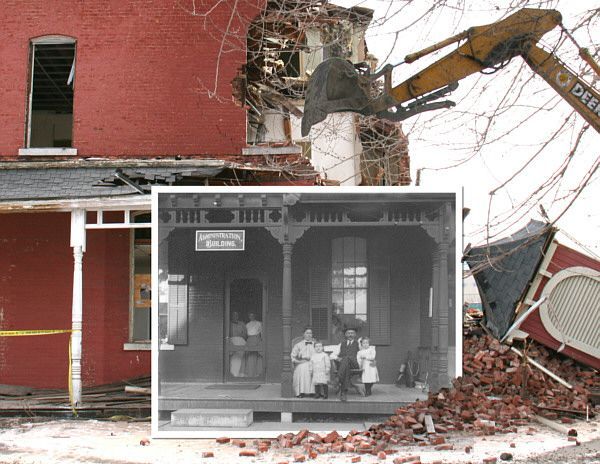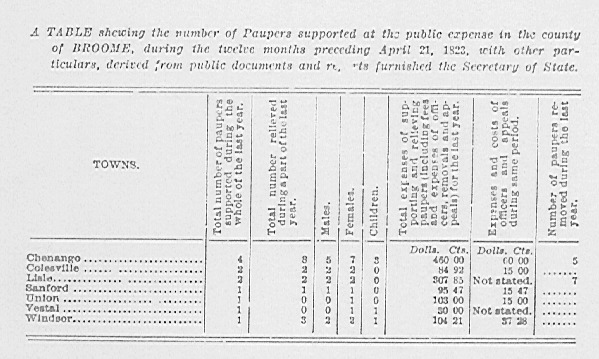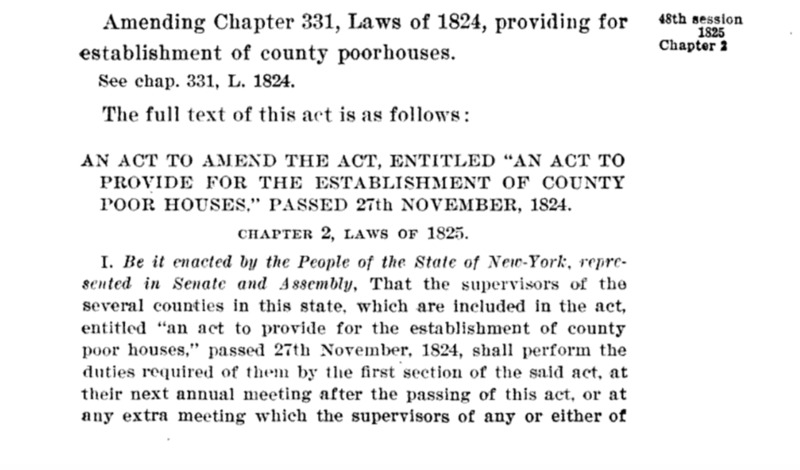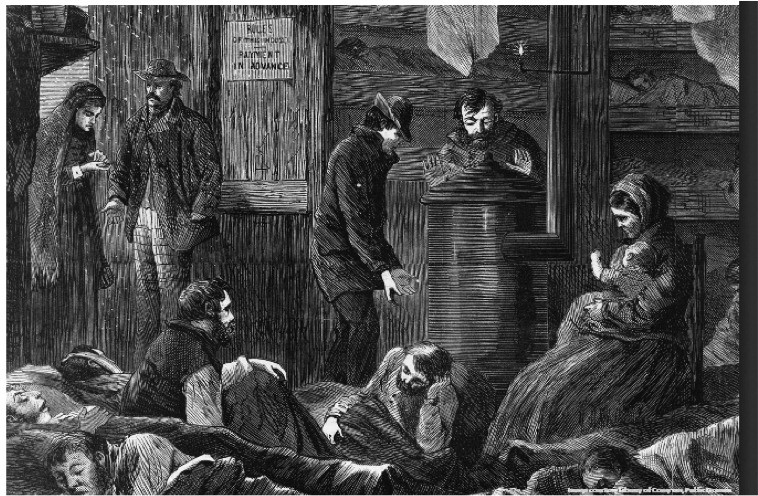The Broome County Almshouse
by Iris French
In 1830, the Broome County Almshouse opened and remained a presence in Binghamton until closing in the 1960s. It would become apart of the Broome County Community College as a learning space until it was demolished in 2010. Three miles north of Binghamton, its construction was the result of state initiatives to effectively institute poor relief in New York. With the creation of the Yates Report in 1823 and the passing of the County Poorhouse Law in 1824, the Broome County Almshouse is a direct result of government attempts to regulate and effectively solve poverty relief within New York State.
The Yates Report was presented by John Yates to the Senate Assembly in 1823. It was compiled from data collected from New York counties regarding the amount of paupers, taxes paid from them and general consensus on the need for an almshouse. County clerks were primarily responsible for submitting the information with public opinion accounted for as well. The report split New York paupers into two classes; temporary paupers who primarily needed assistance only in the fall and winter, due to lack of employment in agricultural business. The other classification was permanent paupers whose destitution was constant. Poor relief was desperately needed for the latter who were facing removal or transplanting into other counties due to the high cost of maintaining them. Medical bills paupers wracked up were particularly difficult for county doctors as was the spreading of disease. New York State was in desperate need to find a proper humanitarian as well as an economic solution to regulating the permanent paupers within the counties.
The Yates Report when presented to the Senate established a firm plan based on previous European plans that attempted to regulate poor relief for permanent paupers. The information gathered by John Yates, the Secretary of State for New York, presented an argument on how the state could no longer afford to continuously bleed money handling the management of the poor without a uniform plan. Counties were facing issues of gathering up the poor and dropping them in different counties to avoid the responsibility which under the new laws established for poor relief would become illegal. Workhouses and prison like treatment of permanent paupers would no longer be allowed outside of punishments rendered. Most importantly for the topic at hand, the construction of Almshouses throughout every county in New York would be created to house the poor. With the common association of pauperism and alcoholism, whiskey distilleries throughout the state would be annually taxed to fund the construction of these buildings over the following years.
When the Broome County Almshouse was finally opened in 1830, it would be comprised of 130 acres of farmland three miles North of Binghamton. The hopes were high with a keeper and his wife being the primary caretakers for the wards who would come through their doors but ultimately they would quickly become overwhelmed. By 1857, a multitude of the residents would suffer from varied mental illnesses varying from alcoholism to what was deemed as idiocy for the time. An investigation conducted would report on the poor conditions of the Almshouse, though mostly clean, a single bath tub was provided for about forty residents including children. The keepers of this home were incapable of providing the adequate care needed for mentally ill wards as were many almshouses within New York State such as the Lawrence County Almshouse. It would not be until 1894 that children would be officially removed from all Almshouses within the United States.
The Broome County Almshouse like almost all other almshouses in their infancy as a government institution would fall very short of the state's expectations. But the establishment of government regulated poor relief would provide a firm foundation for further humanitarian minded institutions to grow within Broome county and remain until modern day.
Bibliography:
Broome County Almshouse Demolition. 2010. Broome County, New York State Landmarks, Binghamton, NY.
Documents of the Senate of the State of New York, 1904
Committee on Superintendents of Poor Accounts, Report 1867
Muller J.L. (2017) Rendered Unfit: “Defective” Children in the Erie County Poorhouse. In: Byrnes J., Muller J. (eds) Bioarchaeology of Impairment and Disability. Bioarchaeology and Social Theory. Springer, Cham
Yates, John, “Report of the Secretary of the State in 1824 on the Relief and Settlement of the Poor.” Journal. February 9, 1824. ‘The Almshouse Experience.” Published 1971. Print.
"Broome County Almshouse." Poorhouse History of Broome County. Accessed March 21, 2018. http://www.poorhousestory.com/BROOME.htm.
Stewart, Estelle May. The Cost of American Almshouses. New York: Arno Press, 1976.



